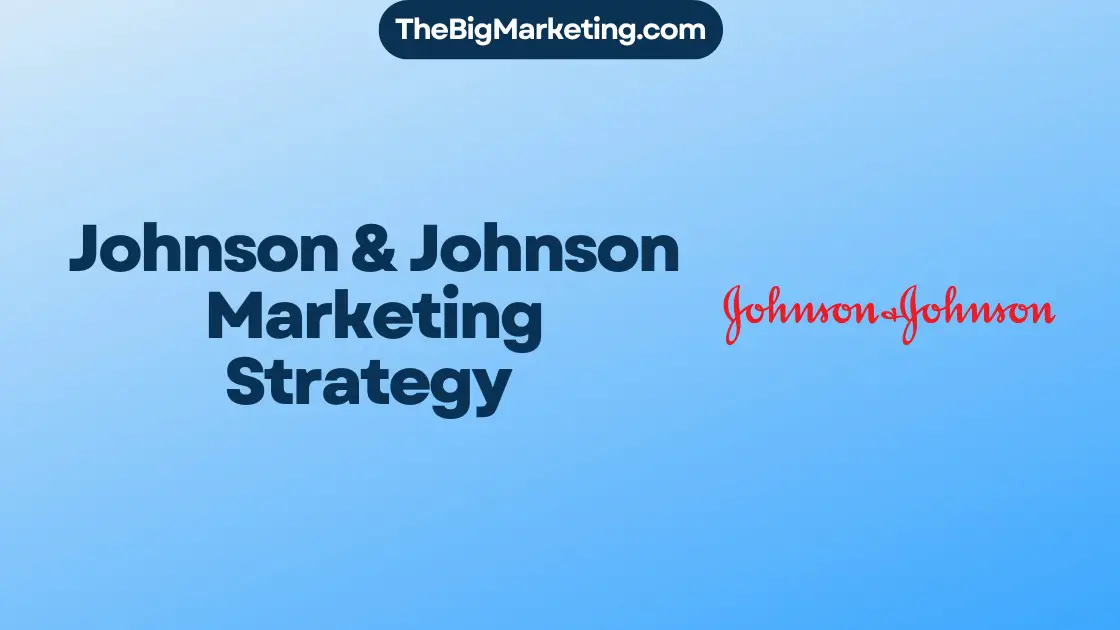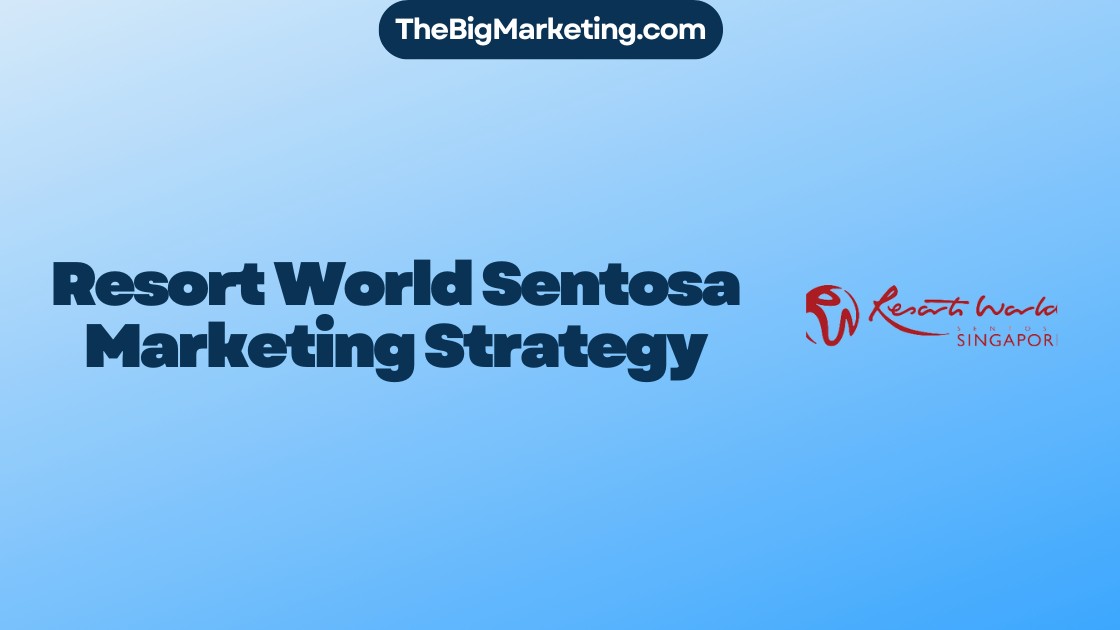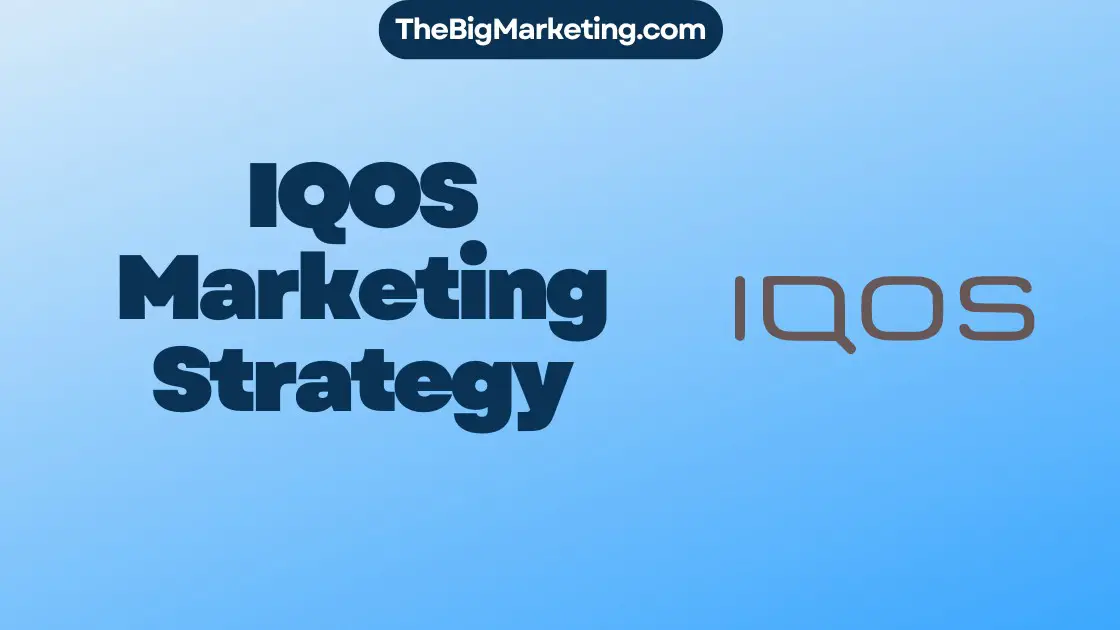Atlas Copco, a global industrial company renowned for its compressors, vacuum solutions, generators, pumps, power tools, and assembly systems, has devised an innovative marketing strategy for 2024. This case study delves into the strategic planning tactics and digital marketing approaches utilized by Atlas Copco to drive their business forward.
Key Takeaways:
- Atlas Copco has developed a forward-thinking marketing strategy for 2024
- Strategic planning tactics have played a vital role in Atlas Copco’s success
- The company has embraced digital marketing approaches to stay competitive
- Aligning talent strategy with business goals has proven beneficial for Atlas Copco
- Building a community of learning and collaboration has enhanced employee engagement
About Atlas Copco
Atlas Copco is a global industrial company headquartered in Stockholm, Sweden. With a presence in over 180 countries, they have established themselves as a leader in the industry. Known for their market-leading compressors, vacuum solutions, generators, pumps, power tools, and assembly systems, Atlas Copco delivers innovative and reliable products.
Atlas Copco’s commitment to quality and customer satisfaction sets them apart from their competitors. Their compressors are widely recognized for their superior performance, efficiency, and durability. Whether it’s providing compressed air for industrial applications or offering vacuum solutions for various industries, Atlas Copco continues to meet the diverse needs of their customers with cutting-edge technology and unmatched expertise.
In addition to their compressors and vacuum solutions, Atlas Copco also offers a wide range of generators, pumps, power tools, and assembly systems. These products are designed to enhance productivity, efficiency, and safety across different industries, including construction, manufacturing, mining, and more.
With a relentless focus on innovation and a customer-centric approach, Atlas Copco remains at the forefront of the industry. Their dedication to continuous improvement and sustainable solutions drives their business forward.
Leading the Industry with Innovation and Expertise
Atlas Copco’s commitment to being a market leader is evident in their innovative solutions and industry expertise. They continuously invest in research and development to create cutting-edge technologies that cater to the evolving needs of their customers.
By understanding the unique requirements of different industries, Atlas Copco ensures that their products deliver exceptional performance, reliability, and energy efficiency. Their comprehensive product portfolio and global network of service centers enable them to provide support and solutions to customers worldwide.
Atlas Copco’s dedication to sustainability is another key aspect of their business philosophy. They strive to minimize environmental impact by developing energy-efficient products, reducing waste, and embracing sustainable manufacturing practices. This commitment not only benefits the planet but also helps customers achieve their own sustainability goals.
As Atlas Copco continues to push boundaries and drive innovation in the industry, they remain the go-to choice for market-leading compressors, vacuum solutions, generators, pumps, power tools, and assembly systems.
Aligning Talent Strategy with Business Strategy
One of the key challenges that Atlas Copco faced was aligning their talent strategy with their overarching business strategy. The company recognized the importance of supporting a holistic approach to talent and learning, encompassing every aspect from recruitment to development, engagement, and retention. To address this challenge, Atlas Copco implemented the LinkedIn Talent Solutions suite, which included LinkedIn Learning, Recruiter, and Glint.
This comprehensive suite allowed Atlas Copco to deliver relevant micro-learning experiences to all employees, regardless of their location or language. Not only did this increase accessibility and inclusivity, but it also fostered a culture of continuous learning within the organization. By leveraging the power of LinkedIn Learning, employees were able to enhance their skills, knowledge, and expertise, which in turn contributed to their individual growth and career development.
In addition to implementing the LinkedIn Talent Solutions suite, Atlas Copco created an advocacy program that capitalized on early adopters and amplified successful local learning initiatives across the company. This program played a vital role in encouraging employee engagement and participation, as well as reinforcing the importance of learning and development within the organization.
The tangible results of these efforts were impressive. In the first quarter of 2020 alone, Atlas Copco achieved a 100% activation rate for LinkedIn Learning licenses, indicating widespread utilization and engagement. Furthermore, employees collectively dedicated over 50,000 hours to learning, further underscoring the success of the talent strategy and its alignment with the overall business goals of the company.
| Initiative | Results |
|---|---|
| Activation Rate of LinkedIn Learning Licenses | 100% |
| Learning Hours in Q1 2020 | Over 50,000 |
The Benefits of Aligning Talent Strategy
Aligning the talent strategy with the business strategy offers several key benefits for an organization like Atlas Copco:
- Enhanced Employee Development: By providing relevant learning opportunities through the LinkedIn Talent Solutions suite, employees have the chance to continually develop and enhance their skills, contributing to their professional growth and overall capability within the company.
- Improved Employee Engagement: The advocacy program, combined with the accessible and inclusive nature of micro-learning experiences, promotes higher levels of employee engagement. This leads to increased motivation, job satisfaction, and ultimately improved retention rates.
- Increased Organizational Agility: A talent strategy aligned with the business strategy ensures that the workforce is equipped with the necessary skills and competencies to adapt to changing market dynamics and business objectives. This allows Atlas Copco to remain agile and responsive in a rapidly evolving industry.
By strategically aligning their talent strategy with their business strategy, Atlas Copco has successfully created a culture of learning, growth, and engagement within the organization. This has not only enabled the company to attract and retain top talent but also to build a skilled workforce capable of driving innovation and achieving long-term success.
Building a Community of Learning and Collaboration
Atlas Copco understands the value of creating a strong sense of community among its teams. They recognize that collaboration and knowledge sharing are key to fostering innovation and growth. To facilitate this, Atlas Copco has implemented a range of tools and communication channels that encourage open dialogue and the exchange of ideas.
One of the core tools used by Atlas Copco is a centralized communication platform that allows teams to connect and collaborate seamlessly. This platform serves as a hub for discussions, project updates, and knowledge sharing. By providing a dedicated space for teams to interact, Atlas Copco promotes a strong sense of community and encourages continuous learning.
In addition to the centralized communication platform, Atlas Copco also utilizes forums as a means of fostering collaboration. These forums enable employees to seek insights and advice from their peers, facilitating cross-functional collaboration and problem-solving. By leveraging the diverse expertise within the organization, teams can tackle challenges more effectively and drive innovation.
A crucial aspect of building a community of learning and collaboration is providing the right tools to support communication and collaboration. Atlas Copco ensures that teams have access to a variety of tools suited to their specific needs. Whether it’s project management software, video conferencing tools, or document sharing platforms, these tools empower teams to work together efficiently and effectively regardless of location.
Furthermore, Atlas Copco promotes transparent and open communication channels throughout the organization. Regular team meetings, virtual town halls, and company-wide updates ensure that everyone is on the same page and aligned towards achieving common goals. This facilitates a culture of collaboration and ensures that teams are working towards a shared vision.
To illustrate the importance of building a community of learning and collaboration, consider the following table:
| Benefits of Building a Community of Learning and Collaboration | Example |
|---|---|
| Enhanced innovation | Teams from different departments collaborate on a new product development, resulting in a groundbreaking solution. |
| Increased employee engagement | Regular knowledge sharing sessions and collaborative forums create a sense of belonging and ownership. |
| Accelerated problem-solving | By tapping into the collective expertise of the community, teams quickly identify and address challenges. |
| Improved decision-making | Accessible communication channels allow for timely discussions, resulting in well-informed decisions. |
| Strengthened organizational culture | A culture of collaboration and learning fosters a positive work environment and attracts top talent. |
By actively cultivating a community of learning and collaboration, Atlas Copco empowers its teams to reach their full potential and drive meaningful outcomes. This commitment to fostering a collaborative environment sets the stage for continued success in the ever-evolving industrial landscape.
Expanding into the U.S. Market
Atlas Copco, a global leader in air compressors, faced significant challenges when entering the U.S. markets. Despite being the market-share leader worldwide, they initially held only a 1% market share in the United States. Recognizing the immense potential for growth in the U.S. market, Atlas Copco devised a series of strategic distribution maneuvers to strengthen their position and capture a larger market share.
These strategic distribution maneuvers involved comprehensive market research, understanding customer needs and preferences, and identifying gaps in the market. Atlas Copco leveraged their expertise and industry knowledge to strategically position their air compressors in the U.S. market.
By partnering with local distributors and implementing targeted marketing campaigns, Atlas Copco successfully increased their market share from 1% to an impressive 10% in just ten years. This growth was a result of their strategic focus on distribution strength and customer satisfaction.
The Key Elements of Atlas Copco’s Strategic Distribution Maneuvers
Atlas Copco’s distribution strategy in the U.S. market was built on several key elements:
- Partnering with Local Distributors: Atlas Copco formed strategic partnerships with established local distributors who had a deep understanding of the U.S. market. This collaboration allowed for effective market penetration and distribution of Atlas Copco air compressors across various industries.
- Targeted Marketing Campaigns: To increase brand awareness and drive customer engagement, Atlas Copco launched targeted marketing campaigns specifically tailored to the U.S. market. These campaigns highlighted the unique features and benefits of their air compressors and effectively communicated their value proposition to potential customers.
- Strong Customer Support: Atlas Copco prioritized customer satisfaction by providing comprehensive after-sales support and maintenance services. This commitment to exceptional customer service further solidified their reputation in the U.S. market, leading to increased customer loyalty and repeat business.
Through these strategic distribution maneuvers, Atlas Copco successfully expanded their presence in the U.S. market and established a strong foothold as a leading provider of air compressors. Their commitment to understanding market dynamics, forming partnerships, and delivering superior customer support paved the way for their remarkable growth trajectory.
| Year | Market Share |
|---|---|
| Year 1 | 1% |
| Year 5 | 5% |
| Year 10 | 10% |
Target Audience Analysis and Competitor Analysis
As part of Atlas Copco’s comprehensive marketing strategy, conducting a thorough target audience analysis was essential. By understanding the needs and preferences of their customers, they were able to tailor their marketing campaigns accordingly. Target audience analysis helped them identify the specific demographics, behavior patterns, and pain points of their audience.
In addition to understanding their target audience, Atlas Copco also recognized the importance of conducting competitor analysis. By evaluating their competitors’ marketing strategies, market positioning, and unique selling propositions, Atlas Copco gained valuable insights that helped them differentiate their brand. This analysis allowed them to identify gaps in the market and create a brand positioning strategy that set them apart from their competitors.
Through target audience analysis and competitor analysis, Atlas Copco strategically positioned their brand and developed a unique value proposition for their customers. This approach enabled them to create compelling marketing campaigns and establish a strong foothold in the global industrial market.
To visualize the impact of target audience analysis and competitor analysis on Atlas Copco’s marketing strategy, let’s take a look at the following table:
| Benefits of Target Audience Analysis | Implications of Competitor Analysis |
|---|---|
| 1. Understanding customer needs and preferences | 1. Identifying gaps in the market |
| 2. Tailoring marketing campaigns to target audience | 2. Differentiating from competitors |
| 3. Creating a unique value proposition | 3. Strategic brand positioning |
By leveraging target audience analysis and competitor analysis, Atlas Copco successfully aligned their marketing efforts with their customers’ expectations and stood out from their competitors. This strategic approach played a significant role in their overall marketing strategy and contributed to their continued success in the industrial market.
Marketing Campaign Optimization
When it comes to marketing, optimization is key. Atlas Copco understands the importance of maximizing the effectiveness of their campaigns. To achieve this, they rely on data-driven insights and market research to inform their strategies.
By analyzing customer behavior, preferences, and trends, Atlas Copco is able to create campaigns that resonate with their target audience. They identify the channels and messaging that are most effective in reaching their customers and use this information to optimize their marketing efforts.
Continuous monitoring and optimization are fundamental to their approach. Atlas Copco regularly evaluates the performance of their campaigns and makes adjustments based on the data. By doing so, they can ensure they are maximizing their return on investment and driving tangible results.
Market research plays a crucial role in this optimization process. It allows Atlas Copco to stay informed about market trends, customer needs, and competitive insights. Armed with this knowledge, they can refine their strategies and remain ahead of the competition.
Ultimately, marketing campaign optimization is essential for achieving success in today’s competitive landscape. By leveraging data-driven insights and conducting thorough market research, Atlas Copco has been able to create highly effective marketing campaigns that deliver measurable results.
Benefits of Marketing Campaign Optimization
- Increased ROI by targeting the right audience
- Enhanced customer engagement and brand awareness
- Improved conversion rates and lead generation
- Cost-effective use of marketing resources
- Ability to adapt and respond to changing market trends
The Importance of Strategic Planning
Strategic planning served as a cornerstone in Atlas Copco’s marketing strategy, enabling them to navigate the evolving industrial landscape with precision. By meticulously analyzing market trends, they identified growth opportunities and crafted long-term plans to leverage those trends effectively. This proactive approach empowered Atlas Copco to not only stay ahead of their competitors but also pave the way for future growth in the industry.
Market trends act as a compass that guides companies to make informed decisions and adapt their strategies accordingly. Atlas Copco recognized the impact of these trends on their business and used them as valuable insights to shape their marketing initiatives. With a finger on the pulse of the market, they were able to anticipate industry shifts and position themselves strategically.
However, strategic planning goes beyond recognizing market trends. It involves aligning marketing efforts with broader business goals, creating a cohesive framework that ensures every action contributes to the company’s overall growth objectives.
Benefits of Strategic Planning
Implementing a strategic planning approach delivered several key benefits for Atlas Copco:
- Proactive Adaptation: With a well-defined strategy in place, Atlas Copco could proactively adapt to changing market conditions. By constantly monitoring trends, they were able to identify opportunities and promptly adjust their marketing tactics to align with emerging demands.
- Competitive Advantage: Strategic planning allowed Atlas Copco to gain a competitive edge by being one step ahead of their rivals. By staying attuned to market trends, they could differentiate themselves and position their offerings strategically, securing a foothold in the market.
- Focused Resource Allocation: Through strategic planning, Atlas Copco optimized their resource allocation by investing in initiatives that directly contributed to their long-term growth. This methodical approach ensured that marketing efforts were targeted, maximizing their impact and return on investment.
A successful marketing strategy relies on a robust foundation of strategic planning. By harnessing market trends, aligning marketing initiatives with business goals, and leveraging strategic insights, Atlas Copco was able to achieve sustainable growth and maintain their position as an industry leader.
Conclusion
Atlas Copco’s marketing strategy for 2024 demonstrates their commitment to staying ahead in the dynamic industrial market. By leveraging a combination of digital marketing approaches, market research insights, and strategic planning tactics, they have positioned themselves for continued success.
An important aspect of their strategy is aligning their talent strategy with their business goals. This allows them to attract, develop, and retain top talent, ensuring they have the right people driving their marketing initiatives forward.
Additionally, by fostering a community of learning and collaboration, Atlas Copco creates an environment where employees can share ideas and experiences, promoting innovation and growth.
Expanding into the U.S. market has been a significant milestone for Atlas Copco. Through strategic distribution maneuvers and targeted market analysis, they have successfully improved their market share, establishing a strong presence in this key market.
Furthermore, their emphasis on target audience and competitor analysis enables Atlas Copco to position their brand effectively and differentiate themselves from competitors, ultimately delivering unique value propositions to their customers.
Atlas Copco’s marketing strategy is not just about planning; it’s about optimizing campaigns based on data-driven insights and market research. By continuously refining their marketing efforts, they maximize their return on investment and drive tangible results.
In conclusion, Atlas Copco’s holistic approach, combining digital marketing strategies, market research, and strategic planning, sets them apart in the industrial market. Their dedication to innovation and staying ahead of the curve ensures they will continue to thrive in an ever-changing business landscape.






